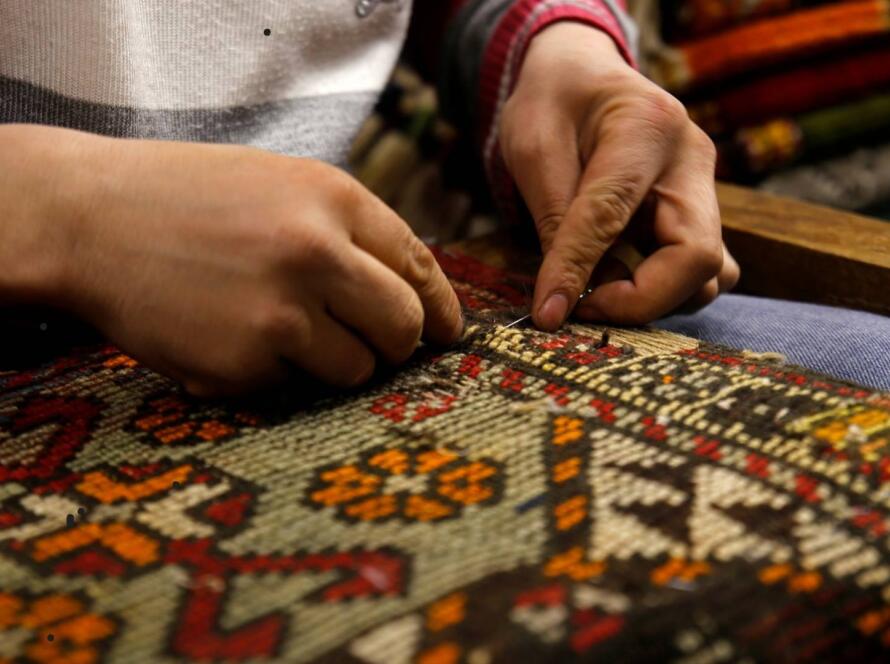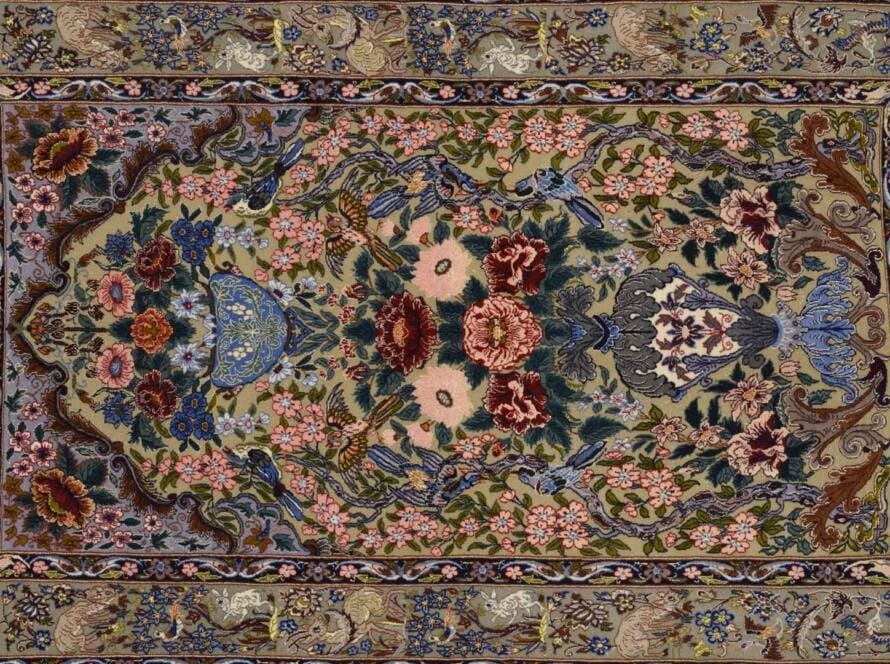Choosing the right size rug for a living room can significantly enhance the space’s overall aesthetic and functionality. A rug should ideally be large enough to accommodate the front legs of all major furniture pieces within the seating area. This creates a cohesive look while defining the space effectively.
In smaller living rooms, a good guideline is to select a rug that is at least 5 feet by 8 feet, ensuring it fits snugly under the furniture. For larger areas, a size of 8 feet by 10 feet or 9 feet by 12 feet usually provides a balanced appearance.
Understanding the room’s layout and intended use can help narrow down the choices. The right rug not only adds comfort but also ties together the design elements within the living room.
Determining the Appropriate Rug Size for living room
Choosing the right rug size for a living room involves understanding the room’s dimensions, standard rug sizes, and potential customization for unique spaces. Factors such as furniture layout and overall aesthetic also influence the decision.
Understanding Room Dimensions
The size of a living room significantly impacts the choice of rug. To determine the appropriate rug size, measure the room’s length and width. Also, consider the arrangement of furniture.
A common rule is to leave 18-24 inches of bare floor around the edges of the rug. This creates a frame and enhances visual appeal. For smaller rooms, a smaller rug can help define areas without overwhelming the space.
Additionally, in larger areas, a rug should ideally accommodate the front legs of key furniture pieces. This practice unifies the space and enhances the overall design.
Standard Rug Sizes and Placement Tips
Standard rug sizes are often categorized as:
- 5’x8′: Suitable for small areas or arrangements, like a coffee table setting.
- 8’x10′: Ideal for medium-sized rooms, allowing placement under the front legs of sofas and chairs.
- 9’x12′: Works well in spacious living rooms, accommodating larger furniture groupings.
Placement is crucial for visual balance. When arranging furniture, it’s best to position a rug beneath at least the front legs of seating to create cohesion. A smaller rug can be used in defined spaces, such as a reading nook.
Custom Sizing for Unique Spaces
For living rooms with unique layouts, custom rug sizing may be necessary. This option allows for tailored dimensions that fit specific furniture arrangements or architectural features.
When considering a custom rug, take accurate measurements of the area. It’s essential to think about how the rug will relate to both furniture and the space as a whole.
Custom rugs can be designed to match specific decor styles or colors, offering a cohesive look. They can also help define distinct areas, such as separating living and dining spaces in open-concept designs.
Types of Rugs and Their Durability
Rug durability greatly depends on the material and construction method. Understanding these factors can help in selecting the best option for a living room. Different types of rugs offer varying benefits in terms of longevity and maintenance.
Material Considerations for Longevity
The material of a rug significantly influences its lifespan. Common materials include wool, nylon, cotton, and jute.
- Wool: Known for its resilience, wool tends to last over 10 years with proper care. It naturally resists stains and dirt, making it ideal for high-traffic areas.
- Nylon: This synthetic fiber is durable and resistant to fading. Rugs made of nylon can also last over a decade, especially in busy living rooms.
- Cotton: While soft and easy to clean, cotton rugs typically have a shorter lifespan, ranging from 3 to 5 years. They are best suited for low-traffic areas.
- Jute: Eco-friendly and durable, jute works well in low-traffic zones. Expect a lifespan of up to 5 years with proper maintenance.
Benefits of Hand Knotted Rugs
Hand knotted rugs stand out for their unparalleled durability and craftsmanship.These rugs can last several decades when taken care of properly. The tight knotting technique contributes to their strength, ensuring resistance against wear and tear.
In addition to longevity, hand knotted rugs offer unique designs, making each piece one-of-a-kind. They are often made from high-quality materials like wool or silk, enhancing their appeal.
Investing in a hand knotted carpet can be beneficial for homeowners seeking long-lasting elegance in their living spaces.
Latest Trends and Carpet Designs
The rug market in 2024 is defined by innovative designs and a focus on sustainability. Emerging patterns and textures are capturing interest, alongside advancements in carpet wholesaling that enhance accessibility and variety.
Exploring 2024’s Trending Rugs
In 2024, rugs that combine bold colors with geometric patterns are in high demand. These designs can add a modern touch to living rooms, appealing to those looking to make a statement.
The use of natural fibers, such as jute and wool, continues to rise. This trend is complemented by the increasing preference for eco-friendly materials that reduce environmental impact.
Textural variations are gaining popularity, with rugs featuring tufted, woven, and shag styles. These options provide both comfort and aesthetic appeal, allowing homeowners to choose rugs that fit their personal style while enhancing the living environment.
Innovations in Carpet Wholesaling
The carpet wholesaling industry has seen significant innovations aimed at improving distribution and product diversity. Digital platforms are transforming how retailers source and sell carpets, providing easier access to a wider range of designs.
Wholesale suppliers are increasingly offering customizable options. This allows customers to select specific colors, patterns, and sizes tailored to their needs.
Sustainability is also a priority in modern wholesaling practices. Many suppliers are focusing on environmentally responsible production methods, ensuring that new carpet designs align with green initiatives. This trend is influencing consumer purchasing decisions, making eco-conscious products more appealing.
Choosing Quality Carpets for Home and Office
Selecting the right carpet involves understanding grades and identifying reputable manufacturers. Knowledge of these factors aids in making wise investments that suit specific needs.
Assessing Carpet Grades
Carpet grades play a crucial role in determining durability and comfort. The grade often reflects the quality of materials and construction methods used. Generally, carpets are classified into three primary grades: residential, commercial, and hospitality.
- Residential Carpet: This is designed for home use, emphasizing comfort and aesthetics. Look for medium to high grades that withstand everyday foot traffic.
- Commercial Carpet: It is engineered for heavy use in office spaces. A higher grade ensures resistance to wear and tear, making it suitable for businesses.
- Hospitality Carpet: Typically found in hotels and restaurants, these carpets need to endure high traffic while offering a welcome appearance. Manufacturers like Shivalika Rugs specialize in these products.
Choosing the right grade based on use can significantly enhance performance and appearance.
Identifying High-Quality Manufacturers
Sourcing quality carpets begins with identifying reputable manufacturers. Reliability can often be gauged through brand reputation and customer feedback.
Key indicators of high-quality manufacturers include:
- Materials: Premium materials contribute to longevity. Look for carpets made from nylon, wool, or polyester.
- Warranty: A robust warranty usually reflects a manufacturer’s confidence in their product.
- Production Standards: Reputable manufacturers adhere to industry standards for safety and quality, ensuring the carpets are free of harmful chemicals.
Shivalika Rugs, a recognized manufacturer in the hospitality sector, upholds these standards, delivering carpets that combine functionality with aesthetics. Ensuring carpets meet these criteria can lead to a satisfying purchasing experience.
Specialty Rug Providers and Manufacturers
Rug selection involves various factors, including material, style, and durability. Specialty manufacturers cater to specific needs, offering innovative solutions for different environments and preferences.

Washable Rugs and Their Advantages
Washable rugs have become increasingly popular due to their practicality and ease of maintenance. Shivalika Rugs is a leading manufacturer in this category, providing rugs that are designed for frequent washing without compromising quality.
These rugs come in a variety of styles and colors, making it easy to find options that fit any décor.
Advantages include:
- Stain Resistance: Easy to clean, ideal for households with pets or children.
- Durability: Made to withstand wear and tear, maintaining their appearance over time.
- Versatility: Suitable for various spaces, from living rooms to kitchens.
Consumers appreciate that washable rugs enhance cleanliness without sacrificing style.
Faux Fur Rugs: Luxury and Comfort
Faux fur rugs from Shivalika Rugs offer an elegant touch to living spaces. These rugs combine luxury with practicality, appealing to those who desire comfort without the ethical concerns associated with real animal fur.
The soft texture and aesthetic appeal make faux fur a favorite choice for cozy environments.
Key features include:
- Softness: Provides a plush feel underfoot, enhancing comfort levels.
- Variety: Available in various colors and designs to match personal taste.
- Easy Maintenance: Many faux fur options are machine washable or easy to spot clean.
These rugs create a warm, inviting atmosphere, making them an excellent choice for living rooms or bedrooms.
Commercial Solutions: PVC and Hotel Carpets
For commercial spaces, Shivalika Rugs offers durable PVC floor carpets tailored to high-traffic environments. These carpets are designed to withstand heavy use while maintaining their aesthetic appeal.
Benefits of PVC carpets include:
- Water Resistance: Ideal for areas prone to spills or moisture.
- Easy Cleaning: Simple to wipe down, making maintenance straightforward.
- Longevity: Built to last, providing a cost-effective solution for businesses.
Hotel carpets need to balance style with functionality. Shivalika Rugs addresses this by providing custom designs that cater to hotel aesthetics without sacrificing durability.
Selecting the right specialty rug can significantly impact the look and feel of any living space.
Practical Aspects of Rug Ownership
Rug ownership comes with various practical considerations that affect both aesthetics and functionality in a living room. Maintaining the rug’s integrity and understanding the balance between softness and durability are essential for optimal use.
Maintenance and Cleaning Tips
Regular maintenance prolongs a rug’s lifespan. Vacuuming at least once a week helps remove dirt and dust, preventing it from settling deep into the fibers. For spills, immediate blotting with a clean cloth prevents stains.
Different materials require specific cleaning. For example, wool rugs benefit from professional cleaning every 1-2 years, while synthetic rugs can often be spot cleaned with mild soap.
Using a rug pad can also help. It provides cushioning, prevents slipping, and minimizes wear and tear. Moreover, rotating the rug every few months ensures even fading from sunlight exposure.
Softness vs. Durability: Finding the Balance
Choosing the right rug involves considering both softness and durability. Tufted rugs, for instance, are often soft and plush, offering comfort underfoot. However, they may not be as durable as woven rugs, especially in high-traffic areas.
When selecting a rug, consider the pile height. Low-pile rugs tend to be more durable and easier to clean, making them ideal for active homes. In contrast, high-pile rugs can enhance comfort but may trap dirt and require more maintenance.
Synthetic materials, like nylon or polyester, offer a good balance, combining softness with resilience. They are also stain-resistant, making them practical choices for families or pets. Always assess the specific needs of the household to strike the right balance.




